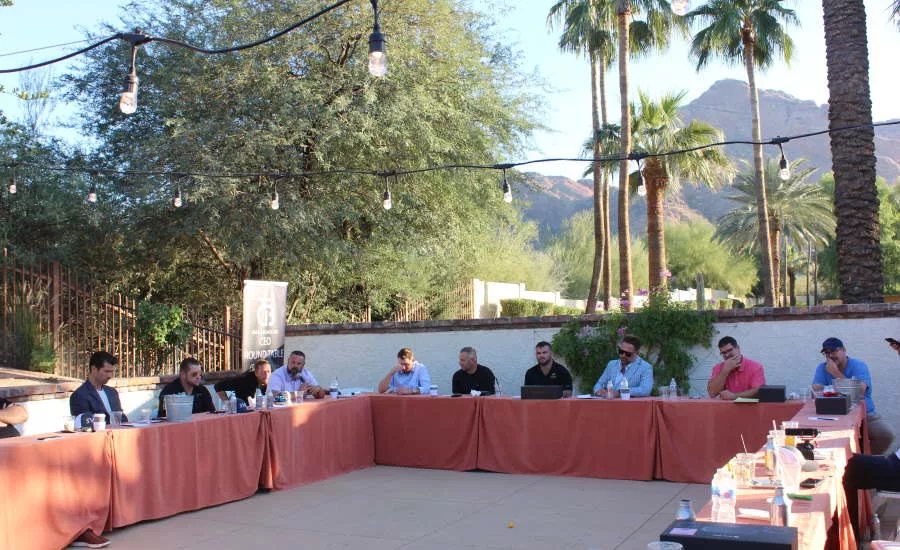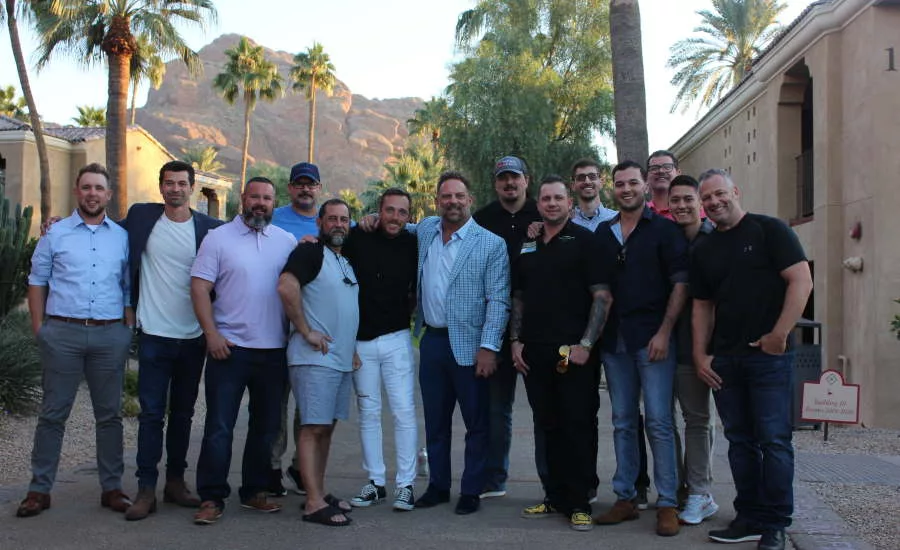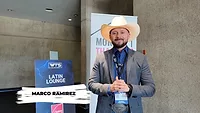Roofing Contactor CEOs Talk Record Storm Season
Storm Ventures Group Invites a Roundtable of Residential Roofing Contractors to Discuss a Storm Season Unlike Any Other

More than a dozen roofing contractors that specialize in storm response gathered in Scottsdale, Ariz., in November for an event organized by Storm Ventures Group and sponsored by Daly & Black, P.C. Photos courtesy of Storm Ventures Group.

Anthony Delmedico, CEO and founder of Storm Ventures Group (center) brought roofing company CEOs together for a rare debrief over the 2020 storm season, and to share ideas about how to better prepare for 2021 and beyond.
Among all the challenges already facing the roofing industry in 2020 — workforce, pandemic, economic freefall — it also turned out to be an unforgettable storm season. The National Oceanic and Atmospheric Administration (NOAA) said the year was the most active storm season on record, in terms of named storms (29), at the time of publication. And that was just along the Gulf and Atlantic coasts.
Several states across the heartland endured major hail and wind events, and weather also contributed to historic wildfires in parts of the West.
Roofing contractors felt the impact, reacted and many reaped the benefits of the response.
“It’s been a historic year for storms, and great for us mainly because our main markets continued to hit their budgets with all the activity,” said Sam Struthers, owner and CEO of Crest Exteriors.
Based in Plano, Texas, Crest services the entire United States and has branch offices in Denver and South Florida.
7th Annual Win the Storm
When: March 31 - April 2, 2021
Where: Ernest N. Morial Convention Center, New Orleans
What: Leading Speakers from roofing, insurance restoration; educational breakout sessions; tradeshow expo; networking events
Register: https://winthestorm.com/
Struthers was joined by several other members of RC’s Top 100 in a special meeting of two dozen roofing contractors in Scottsdale, Ariz., on Nov. 14. The event was organized by Storm Ventures Group and is among several in-person events planned in the run-up to the 7th annual Win the Storm Conference, held March 31 – April 2 in New Orleans. The collection of CEOs took advantage of the rare occasion to debrief over the 2020 storm response and share ideas about how to be better prepared for 2021 and beyond.
“We’re all essential businesses in a recession-proof industry, and we all want to get out and make stuff happen,” said Anthony Delmedico, CEO and founder of Storm Ventures Group, on why he gathered the group together. “As CEOs it’s nice to get away and have conversations with other CEOs dealing with a lot of the same things. It triggers ideas from other people that will have an impact.”
COVID-19 Wildcard
Regardless of market or size of the storm, all contractors in the group were forced to deal with a changing business landscape due to COVID-19. While some efficiencies in operations and sales were unearthed by the pandemic, the safety measures, health scares and project delays came at a real cost,
attendees said.
Struthers said he still has crews working tirelessly in Lake Charles, La., which was struck hard by hurricanes Laura (August) and Delta (October). The work, though difficult, proved essential to helping the company stay on track financially in what would have been a difficult year in sales due to the pandemic. However, the price of jobsite delays and shutting down crews for quarantine purposes were steep, and remain unknown variables heading into 2021.
“We have over 150 employees and I know we’re going to have weeks of delays, more exposures, and need to quarantine crews,” Struthers explained. “Insurance carriers don’t even consider it, and it’s hundreds of thousands of dollars in unknowns.”
Product shortages also led to significant delays for homeowners needing repairs in the Midwest, where hail storms were followed up with a rare derecho wind storm. The August event left a swath of damage estimated at more than $7 billion and counting.
“I’ve never seen anything like it,” said Paul Martindale, of Martindale Pinnacle Construction. “I drove through it in Cedar Rapids (Iowa), and roofs were ripped off everywhere. It didn’t matter if it was residential, or commercial. They were just destroyed.”
With offices in Iowa, Minnesota and Wisconsin, Martindale said his team is no stranger to storms. Yet this time they had to adjust quickly by dropping traditional canvassing efforts and increasing call center and digital services to meet COVID-19 safety requirements. Some of that effort, coupled with shortages in roofing supplies, led to significant and unavoidable delays.
“It was a record-breaking year for us, no doubt, but it’s that bad,” he said. “We’re planning on being there until at least end of next year.”
Change is Brewing
Another key takeaway from the meeting was that there is a need for drastic change. Multiple CEOs lamented over the struggle of keeping up with delays in payments and services from insurance carriers, while also trying to keep damage victims whole. In many cases, insurance providers are using the multitude of devastating storms in the same areas to limit or deny claims. That’s putting roofers in a tough position — honor their commitment to repair the damage and cover the costs upfront when the insurance payout isn’t nearly enough for the homeowner to complete the job.
The message was reinforced by participants from the legal and insurance-adjusting fields, who said the frustration among contractors they’re dealing with is palpable, and surging.
“It’s getting very difficult for a lot of them. A roofing contractor is no longer just a roofing contractor completing jobs,” said Jason Burg, chairman of the Orlando-based Commercial Restoration Network. “They’re now in a joint venture with a public adjuster to close the claim and serve their client. And the burden is on the roofing contractor because they’re financing it.”
The end result is harming the industry, the CEOs said. Roofers that want to stay in business can’t rely on that model, and homeowners really don’t understand why their reduced insurance payments won’t cover the true cost of their repair. Challenging the carrier is becoming the norm.
“It’s a sad state of affairs, but having a piece of technology isn’t nearly as important as having a lawyer and adjuster in your back pocket ready to deal with the shenanigans from these carriers,” Delmedico said.
It’s an uphill battle, but several hope that giving a platform and voice to the frustration is the first step toward finding a solution.
“We all run into the same roadblocks to get people what they need in these storm-affected areas,” said Heath Hicks, owner of AVCO Roofing in Dallas. “The insurance company’s ability to influence homeowner outcomes is getting stronger and stronger, and our position with them is getting weaker and weaker. That has to change, and collectively coming together to deal with it is a start."
Looking for a reprint of this article?
From high-res PDFs to custom plaques, order your copy today!







